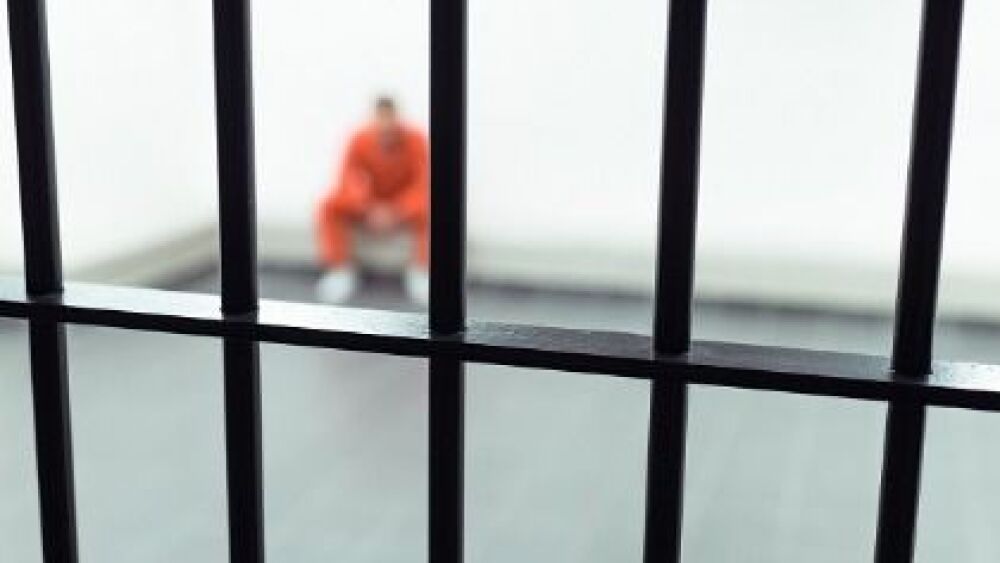By Robert Brzenchek, alumnus, Intelligence Studies at American Military University
Prison reform recently gained increased national attention after Kim Kardashian visited the White House to discuss reform measures with President Trump. However, for many criminal justice professionals, it’s a topic that is regularly at the forefront of their minds. That may come as a surprise to some.
I remember attending the Students for Prison Education and Reform (SPEAR) conference at Princeton University a number of years ago where many attendees were perplexed that a former law enforcement officer was interested in prison reform. I personally became interested in prison reform after the “kids for cash” scandal in Philadelphia where corrupt officials were placing children in for-profit youth centers in return for kickbacks. This corruption ruined the lives of a number of juveniles and their families. It became abundantly clear to me that I should take a deeper interest in prison reform because it unfairly affects individuals of lower socioeconomic means.
As a current scholar-practitioner, I have spent time reviewing research and then weighing it against what I experienced as an officer. I’ve concluded that the numbers do not always reflect the true situation. Research shows that 2.3 million people are incarcerated within jails and prison walls at a rate of approximately 10.6 million times per year. However, this does not include individuals who are still in the system, so the number of people in and out of our prison system is dramatically higher. Many of those who return to the prison system are there not because they have committed new crimes, but for reasons having to do with their socioeconomic status. These are some of the issues that need to be addressed in prison reform measures.
1. Revocations Due to Technical Issues
One of the greatest reasons for recidivism comes from technical violations. A technical violation of probation or parole is misbehavior by an offender under supervision that is not by itself a criminal offense and generally does not result in arrest. Minor technical violations could include failing to report for a scheduled office visit, missing a curfew, lack of employment or attendance at school, testing positive for drug or alcohol use, or contacting a victim or co-defendant. Serious technical violations while on probation or parole, however, could result in re-imprisonment and include things like escape or repeated failure to report, violent crime, or a pattern of misbehavior. A recent example is the re-incarceration of rapper Meek Mill in Philadelphia who had his probation revoked for technical violations. This is an area of prison reform that should be addressed immediately nationwide.
2. Reforming the Cash Bail System
Another area that needs reform is the cash bail system. In the United States, poor defendants often remain in jail because they cannot afford to pay the cash bail, while wealthier defendants go free because they have cash on hand to pay their bail. Because this system is so unfair, some states have already taken steps to eliminate it.
Most jurisdictions in New Jersey, for example, have eliminated their cash bail system and correctional institutions are seeing a remarkable difference in the overall prison population. It’s been one year since New Jersey eliminated the cash bail system and fewer people are sitting in jail; the state’s bail-bonds industry is feeling the pain.
3. Changing Mindsets of Disadvantaged Youths
Socioeconomics, hostile environments and social circles are often significant contributing factors for an individual to commit crime. I teach criminal justice courses at the university level and in a number of lessons I discuss issues of means and opportunity.
As I mention in my book, The Gang Life Laugh Now Cry Later – Suppression and Prevention, young people who grow up in socioeconomically challenged areas often do not have access to the means or opportunities needed to succeed. This cycle unfortunately perpetuates itself into adulthood and in some cases prompts individuals to commit crimes for money, power, and respect. I was appalled to recently overhear youth in Philadelphia bragging about how they “caught a case” and the amount of jail time they would likely get. This experience highlights one of the greatest needs in prison reform: changing mindsets. We must change the mindset of our youth and show them there are paths in life other than prison or death.
4. How Police Can Deter Preventable Incarceration
It may be surprising to some that law enforcement officers also play a role in deterring incarceration. Officers are on the frontline of the criminal justice system and hold tremendous power afforded to them by the laws they uphold. What I found in my years as a police officer is the mere power of discretion can deeply impact someone’s life.
One of the most significant gray areas for an officer is the issue of reasonable suspicion. Reasonable suspicion is a legal standard that applies in different criminal-law contexts, most often where searches and seizures are involved. It requires that officers have an objectively reasonable basis for suspecting criminal activity before detaining someone. What an officer decides is “reasonable” can have an enormous effect on a person’s life and should not be taken lightly.
Officers must make many decisions about how they’ll respond:
- Does a particular situation warrant an officer affecting a vehicle stop?
- Should they conduct a field interrogation of a suspect?
- If a violation is determined, do they issue a warning or should they issue a ticket?
- If the situation permits, do they arrest the person or (where appropriate based on the law), should they not arrest the person?
These are just some of the decisions an officer faces that can have a huge impact on an individual’s future involvement with the criminal justice system.
5. Legal Protections to Aid Disadvantaged People
The legal apparatus of the criminal justice system also needs to have protections in place to make sure everyone is treated fairly. For example, in Philadelphia the District Attorney’s office has a Diversion Unit where offenders can participate in non-trial programming that holds them accountable for their actions while focusing on preventing future criminal justice involvement. This is a great approach for an offender who wants to truly reform themselves. The Philadelphia District Attorney’s office also has a Conviction Integrity Unit where personnel investigate and review convicted offenders’ legitimate claims of innocence and wrongful conviction.
6. Helping Convicted Criminals Re-integrate
Millions of Americans have a current or previous conviction that impacts their access to employment, housing, education and social services. This has a wider impact on society and, in some cases, prompts recidivism among offenders who feel they need to resort to criminal activity in order to obtain basic needs.
There’s an ex-offenders program in Philadelphia where officials are urging employers to take advantage of a pilot program that will pay them to hire ex-offenders. The program, “Fair Chance,” reimburses employers $5 for every hour they employ an ex-offender. The employers must agree to pay $12.10 an hour and give the employee at least 21 hours of work.
Education is also critical to helping offenders improve their situation. According to the Vera Institute of Justice, the U.S. labor market is evolving tremendously to stay on pace with new technologies. In 2018, approximately two-thirds of job postings will require some level of post-secondary education. For incarcerated men and women who are already disadvantaged in the job market, higher education can truly be a key to success after their release.
While the ultimate choice lies with individuals to not break the law, the criminal justice system needs to make sure that it is not unfairly targeting individuals of lower socioeconomic means and providing as many services as possible to help offenders re-integrate into society. Through various proactive reform measures, the U.S. can improve its criminal justice system toward holistic crime prevention. This means the criminal justice system should conduct after-action reviews of policies and practices that work, and eliminate those that do not.
About the Author: Robert M. Brzenchek is the Chief Executive Officer of All Source International, LLC, a security consultancy company based in Philadelphia. He earned a master’s degree in intelligence studies from American Military University and is currently a Ph.D. candidate at Capella University with a proposed dissertation focused on gangs. He was a police officer for six years, where he performed suppression and intervention techniques with various gangs ranging from MS-13, Bloods, Crips, and Latin Kings. In the private sector since 2005, he has worked with DHS, DOD, large corporations, ports, and public utilities on security matters, risk management, policy, and technologies. He is a nationally certified instructor with the International Association of Directors of Law Enforcement Standards and Training (IADLEST). To contact him, email IPSauthor@apus.edu. For more articles featuring insight from industry experts, subscribe to In Public Safety’s bi-monthly newsletter.













